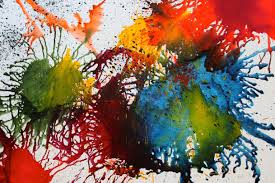Posted by Impact Posters Gallery on 13th Nov 2015
Brief History on Art

What speaks every language, you can see all around you, has never died, but yet remains that date as far back as the Stone Age? If you answered, art, you are correct. But in its infancy some would argue that, “art” as we know it today, was not always considered as such. Different cultures throughout history have used what we now call art, for many different purposes. Take a moment to see how art has been used throughout early history and has influenced our world as we know it today.
Cave paintings that date back to the Stone Age are some of the first creations of what we now call art. But during those times it is believed that cave paintings not only depicted the creatures and the surroundings of the time, but the artists would foretell what the future would look like as well. Producing offspring was a main concern for tribal survival with depictions of Gods and Goddesses of fertility which reigned throughout many of these cave dwellings. It is predominant in these drawings that few were made for the purpose of, “doodling”... or for fun. But that each drawing was a self-expression of what the artist saw and believed. For example, a heavy storm could be etched as a giant God blowing furiously across a settlement. Important moments in a tribes history were also captured on these cave walls like warlike encounters with other tribes, or natural disasters such as volcano eruptions and earthquakes. The walls of a cave often depicted a time-line of events. Sometimes the only way to pass knowledge across a generation was through these drawings. Language had not developed itself in a way to describe all things, generations depended on the wall art in order to survive and learn from their ancestor’s past. These ancient sketches were ways tribes could look back through their history to determine what had happened and what was done. The walls showed things to be afraid of, to steer clear of and also showed what was good and things to be hoped for. Notable art from this time-period includes Stonehenge, the Lascaux Cave Painting, and the Woman of Willendorf stone carving (the first woman figurine).
Mesopotamian art dates from around 3500 B.C to 539 B.C and was primarily focused on a way of serving and praising their connection to who they worshiped. Ownership of such works were not generally signed by the artist during this time period as to show a distinction of who created them, rather the art itself was to be a stand-a-lone representation of the embodiment of the being of whom was worshiped. Notable art from this time-period includes the Gate of Ishtar and the Stele of Hammurabi’s Code.
Egyptian art dates from 3100 B.C. to 30 B.C. and primarily focused on the afterlife. Artists depicted what became of you after you passed away with animal headed representations of Gods in tomb paintings. The Egyptians were meticulous in their record keeping and used the detailed artwork to keep a historical timeline of events. Notable works from this time-period includes the Great Pyramids.
Greek Art 850 B.C. to 31 B.C. was architecturally pleasing to the eye. Much of the artwork created during this time was proportionate and balanced. The Ancient period or early Greek artistic production consisted of Cycladic and Minoan civilizations creating works inspired by Egyptian culture. The Byzantine period from about the 5th century to 1453 A.D. introduced some of the first figures of Jesus Christ, the Virgin Mary and God the Father in place of the nude “Greek Gods”. Post Byzantine and modern periods of Greek art history focused on raising up artists in schools such as the Munich Academy.
The leading style of the time was called Greek Romantic art. Roman Art from 500 B.C to 476. A.D. constructed some of the greatest and breathtaking historical structures of the time, such as the Colosseum, which was an arena where gladiators fought among where many other community events were held. The Arch of Constantine, Roman Columns, and Mosaics are just a few Roman inspired works that have influenced culture today. Significant contributions to the roots of our early art history came from the Japanese, Chinese & Indian cultures with their use of meditative art. Meditative art was used to assist in reaching a deeper meditative state. Much art of early Asian history is attributed to the spiritual worship of the Buddha.
As we look back at early history we can see that what was once used for a purpose of everyday living is now looked at, as art. Much of the art we create now is a self-expression of one’s self; there is no real purpose to it, in contrast to how cultures have used it throughout the times. But it does make you wonder, what do we construct today that we consider a useful way of living, as it will later be defined as the “art” of our age?
